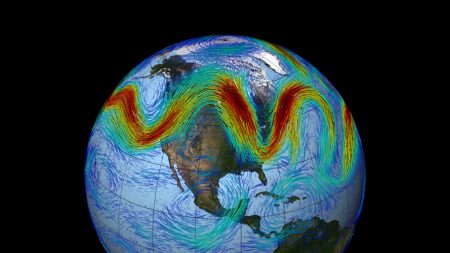March 29, 2017 – The scientific expression for the phenomenon that causes extreme polar vortices to form and linger is known as “quasi-resonant amplification of synoptic-scale waves.” Pennsylvania State University along with researchers in Germany and the Netherlands have just published a paper that appeared in Nature: Scientific Reports this week that explains the correlation between global warming and extreme weather events.
The study’s authors describe “persistent episodes of extreme weather in the Northern Hemisphere” as being associated with changes in the dynamics of the Jet Stream. The authors write that their discovery “adds to the weight of evidence for a human influence on the occurrence of devastating events such as the 2003 European heat wave, the 2010 Pakistan flood and Russian heat wave, the 2011 Texas heat wave and recent floods in Europe.”
So how can global warming alter the Jet Stream? If you are not familiar with the Jet Stream, it a high-altitude flow of air that goes from west to east in the Northern Hemisphere driven by Earth’s rotation and the temperature gradient between the North Pole and the Equator. In recent years Arctic amplification has seen a higher pace of warming in Northern Latitudes than at the Equator. This changes the resonance of the wave which characterizes the Jet Stream’s flows. Instead of sinuous within a narrow range of latitude, the Stream has become elongated and weaker. Hence when the Stream dips well south of the norm it draws down colder air from the poles. And when it sinuously climbs into high northern latitudes it draws up warmer equatorial air. That extreme of waviness is “resonant amplification.” What’s occurring is not a weakening of the waveform, but a strengthening that eventually reaches a point where it remains in place for longer than normal periods of time rather than getting cut off and reforming with a less sinuous appearance.
The study confines itself to looking at weather extremes in spring and summer and not winter phenomena. The authors suggest that other mechanisms may contribute to winter atmospheric behaviour over and above “quasi-resonant amplification” of the Jet Stream’s natural wave.
This is not the first paper to describe evidence of a link between Arctic amplification and extreme weather in lower latitudes. It is, however, the first to show the mechanism for the phenomena.
In their conclusion, the authors of the study write, “our analysis of both historical model simulations and observational surface temperature data, strongly suggests that anthropogenic warming is impacting the zonal mean temperature profile in a manner conducive to wave resonance and a consequent increase in persistent weather extremes in the boreal summer. Combined with other additional proposed mechanisms for climate change impacts on extreme weather, this adds to the weight of evidence for a human influence on the occurrence of devastating events.”
Maybe Donald Trump, or someone who talks to him, can now explain why some days it can be cold outside because of global warming.
















[…] quantify, map and predict the phenomenon. They are studying continental-scale shifts in patterns in the Jet Stream in the Northern […]